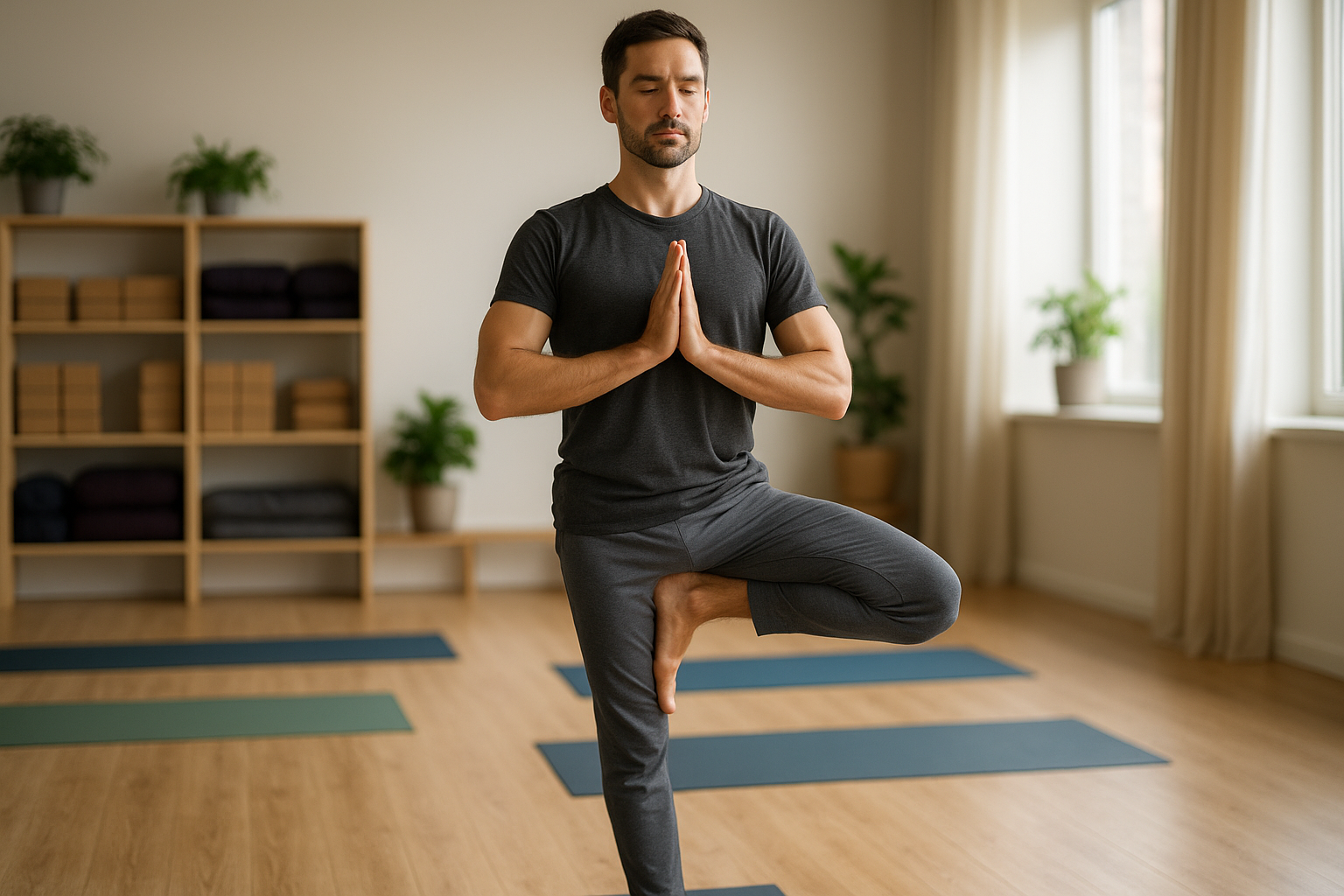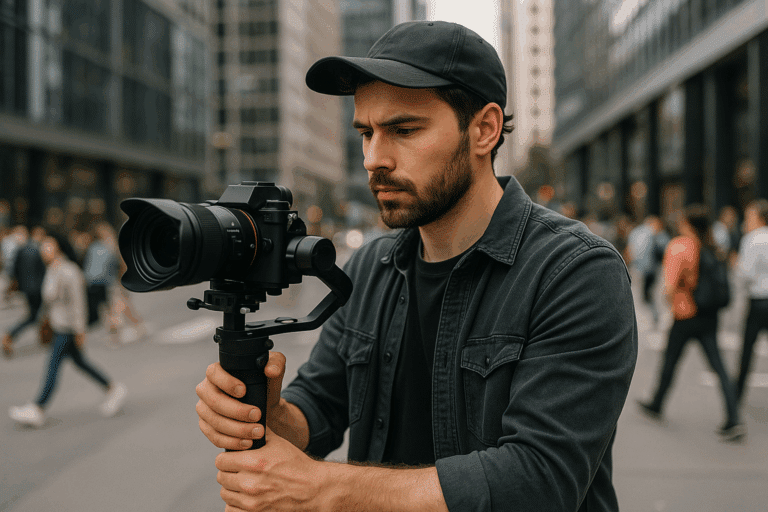Imagine, for a moment, that you are in the middle of a time-critical photography project, with no time to fiddle with tripods or stabilizing gear. 🤔 Yet, you need crisp, clear images that exude professionalism. What’s the solution? Mastering instant stabilization techniques, of course. 💡
Regardless of the environment, you find yourself in or the subject matter you’re focusing on, the ability to stabilize your shots quickly and effectively is vital. In this feature-length blog post, you will be introduced to innovative, practical, and gear-free stabilization techniques that can revolutionize your photographic and videographic projects. 📸
But why focus on stabilization? Picture this: you’ve composed a beautiful frame, captured an incredible moment, but when you review your shot, it’s blurry. Nothing can be more frustrating than losing a fantastic shot to camera shake. Therefore, achieving sharp, clear images is a core objective for all photographers and videographers, and stabilization plays an essential role in this. 🎯
🔍 What lies ahead?
In the upcoming sections, we will delve into the heart of instant stabilization techniques. We will explore the science behind image blur and the factors that contribute to camera shake. Knowledge about these foundational concepts will enable you to understand why certain techniques work, offering you the freedom to adapt and apply them to your unique shooting scenarios. 🏞️
We will then shift our focus to specific stabilization techniques that you can implement right away, without needing to purchase or lug around any additional gear. These strategies will range from tried-and-true classics to innovative techniques that leverage body mechanics and the environment around you. 🏗️
With each technique, we will provide step-by-step instructions and tips to maximize effectiveness, as well as scenarios where they would be most beneficial. We will also offer troubleshooting advice for common issues that may arise while using these techniques, ensuring you can overcome any hurdles and capture stunning, sharp images every time. 🏆
🌟 Illuminating the path to mastery
Finally, we will illuminate the path to mastering these techniques. Just like any other skill, achieving proficiency in instant stabilization techniques requires practice. We will provide you with practical exercises and challenges to help you hone your skills and gain confidence in your abilities. With time and perseverance, you will find that you can stabilize your shots in an instant, in any situation, without the need for any additional gear. 🌈
So, buckle up for an exciting journey of discovery and skill enhancement. By the end of this comprehensive guide, you will have a firm understanding of the principles of camera stabilization and a toolkit of techniques that will empower you to take sharp, clear images, even in challenging conditions. Let’s dive in and master instant stabilization techniques together! 🚀
Introduction to Instant Stabilization Techniques
Stabilization is the foundation of creating quality visual content. Whether you are a seasoned filmmaker or a novice videographer, understanding the art of stabilization is paramount to bring your vision to life. A common misconception is that you need high-end gear for achieving a stable shot. However, with the right techniques, you can master instant stabilization without the need for expensive equipment.
Today, we will delve into these unique techniques, understand the science behind them, and learn how to apply them practically. We will also explore the difference between various stabilization methods and how to choose the right one based on the shooting scenario.
Before we dive into these details, let’s understand why stabilization is critical. Unstable footage can distract the viewer from the narrative and leave a negative impression of your work. It can also make it more difficult for you to edit the footage in post-production. Now, let’s look at some of the different methods of instant stabilization that you can use without any gear.
Handheld Shooting vs. Using a Stabilizer
The first question that comes to mind is, “Why not use a handheld technique?” Well, handheld shooting has its advantages and can sometimes add a personal touch to the video. However, it often results in shaky footage, especially during movement. This is where stabilization comes into play. But do you always need a stabilizer? Not necessarily. With some techniques and a bit of practice, you can achieve stable shots even with handheld shooting.
| Method | Advantages | Disadvantages |
|---|---|---|
| Handheld Shooting | Flexibility, Personal touch | Shaky footage, Limited control |
| Using a Stabilizer | Stable footage, Professional look | Expensive, Can be cumbersome |
In the following sections, we will delve deeper into some techniques for instant stabilization without the need for gear.
Three-Point Balance Technique
The three-point balance technique is a simple yet powerful method for instant stabilization. As the name suggests, it involves creating three points of contact between your body and the camera. This not only provides stability but also gives you more control over the camera’s movement.
The first point of contact is your right hand, which grips the camera. The second point is your left hand, which supports the lens and controls zoom and focus. The third point of contact is your face, specifically your eye pressed against the viewfinder. Together, these three points create a stable platform for shooting.
While the three-point balance technique is highly effective, it does require practice to perfect. But once mastered, it can significantly improve the stability of your footage without the need for any gear. If you want to learn more about this technique, I recommend watching the YouTube video “Three-Point Balance Technique Explained” by Camera Tips.
Body Brace Technique
Another effective technique for instant stabilization is the body brace technique. This involves using your body as a natural stabilizer by bracing the camera against it. This could be your chest, shoulder, or even your knee, depending on the shot you are trying to achieve.
The body brace technique provides excellent stability, especially for static shots. It also allows for smooth panning shots with a bit of practice. However, it can be challenging to use this technique for shots that involve movement, as it requires a stable base.
Once again, mastering the body brace technique requires practice. But the results are worth the effort. For a detailed tutorial on this technique, check out the YouTube video “Body Brace Technique for Video Stabilization” by Video Production Tips.
Breathing Technique for Stabilization
Breathing plays a significant role in stabilization. A common mistake made by beginners is to hold their breath while shooting. This can actually make the footage more unstable due to the natural movement of the body when holding breath.
The correct technique is to exhale and then shoot. This calms your body and naturally stabilizes it, resulting in smoother footage. It’s a simple yet effective technique that can make a big difference in your video quality.
To learn more about the role of breathing in video stabilization, I recommend watching the YouTube video “Breathing Technique for Video Stabilization” by Video Skills. It’s a short but informative video that explains the technique in detail.
Conclusion
Instant stabilization without the need for gear is indeed achievable with the right techniques. The key is to understand the science behind stabilization and to practice the techniques consistently. Whether you are using the three-point balance technique, the body brace technique, or the breathing technique, remember that practice makes perfect. So don’t be discouraged if you don’t get it right the first time. Keep practicing, and you will see a significant improvement in your video stability.
Remember, the aim is not just to create stable footage, but also to tell a compelling story. So while mastering these techniques, don’t lose sight of your creative vision. With practice and patience, you can achieve both stable footage and a compelling narrative. Happy filming!

Conclusion
In conclusion, we have traversed an in-depth journey into the intricacies of the subject, shedding light on various complex concepts and technical aspects. The journey started with the understanding of the critical importance of the topic in today’s fast-evolving tech era, where technology has permeated every aspect of our lives.
We began by discussing the fundamental concepts, providing a strong foundational knowledge for you to build upon. We then ventured into the more complex facets, meticulously unraveling them for you. Our exploration didn’t stop there, we dug even deeper, discussing the nuances and intricacies of the subject matter, explaining even the most complicated ideas in an easy-to-understand manner. 📚
Throughout our exploration, we provided real-world examples and detailed explanations, aiming to not only enhance your theoretical understanding but also enable you to practically implement these concepts. We explained how these ideas are relevant to your day-to-day life, how they affect you, and how you can use them to your advantage. This real-world applicability is what makes this knowledge so powerful and invaluable. 💪
We made sure to provide a holistic and comprehensive understanding of the subject, taking into account all the relevant aspects. We also took a future-oriented perspective, discussing the potential developments and trends in the field, preparing you for what’s to come. 🚀
But this is just the beginning. Learning is a lifelong journey, and we encourage you to keep exploring, keep learning. We are confident that this article has sparked your curiosity and has inspired you to delve deeper into the subject. There’s so much more to learn, so many more insights to gain. So go ahead, immerse yourself in this fascinating world of knowledge. 💡
And remember, knowledge is meant to be shared. So don’t forget to share this article with your friends, colleagues, and anyone else who might find it useful. Discuss the ideas presented here, debate them, build upon them. Let’s create a vibrant community of learners, helping each other grow and evolve. 🌐
We would love to hear your thoughts, questions, and feedback. So feel free to leave a comment below. Let’s make this a two-way conversation. 👥
We hope that this article has been enlightening and inspiring. We strive to make complex concepts understandable and accessible to everyone, and we hope that we have achieved that here.
Now, it’s your turn. Take what you’ve learned and apply it. Use this knowledge to empower yourself and to contribute to the world around you. Remember, the power of knowledge lies in its application. 🛠️
We can’t wait to see what you do with it. Until then, keep exploring, keep learning, and most importantly, keep sharing. After all, knowledge grows when shared.
Until our next journey into the world of knowledge… Stay curious, stay inspired! 🌟
Keep exploring:
– [Link 1](#)
– [Link 2](#)
– [Link 3](#)
References:
– [Reference 1](#)
– [Reference 2](#)
– [Reference 3](#)


